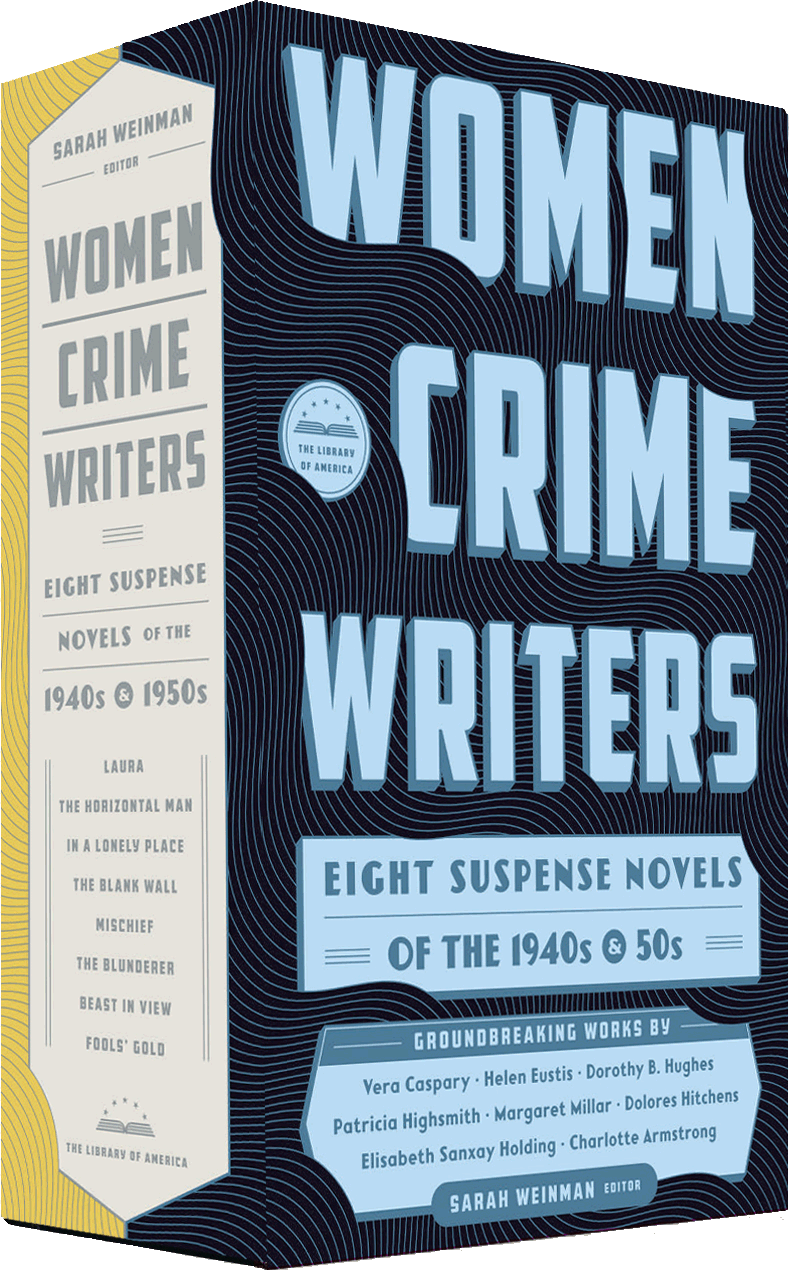by Sarah Weinman
Why devote two volumes to women crime writers? Here is a rich, nuanced tradition of American crime writing that got left behind and neglected. They may not have called themselves feminists—Dorothy B. Hughes openly chafed at the term, while others were more ambivalent—yet their novels remain all-too-relevant to the current conversation on topics like gender bias in publishing. These women paid attention to details, flaws, turns of speech and phrase, and situations that men did not. They show alternative paths of independence not necessarily tied to marriage, and explore the tyranny wrought by the loneliness and alienation of the domestic sphere. It is inconceivable to think of Raymond Chandler writing a domestic suspense story, even as he admired those written by Elisabeth Sanxay Holding, writing that she was “the top suspense writer of them all” in a 1950 letter to his British publisher, Hamish Hamilton.
This introduction cites women who have an important claim on a significant piece of the history of crime and mystery fiction. And yet, with the exception of Agatha Christie, Dorothy L. Sayers, and Patricia Highsmith, their collective name recognition ranks pretty low. It is shocking and disheartening to contemplate, and important to rectify. This two-volume set is a positive step forward.
As I wrote in the introduction to my anthology Troubled Daughters, Twisted Wives: Stories from the Trailblazers of Domestic Suspense (2013), with the increased cultural focus on women’s issues this needlessly neglected generation of female crime writers “deserves, more than ever, to take their place at the literary table.” This collection should ensure that their place setting is permanent.
By Sarah Weinman, editor of LOA’s Women Crime Writers boxed set



 Sarah Weinman is widely recognized as a leading authority on crime fiction. She is the editor of Troubled Daughters, Twisted Wives: Stories from the Trailblazers of Domestic Suspense, which the Los Angeles Review of Books called “simply one of the most significant anthologies of crime fiction, ever.” She is the news editor for Publishers Marketplace, and her work has appeared in The New York Times, The Wall Street Journal, the National Post, and The Washington Post, among other publications.
Sarah Weinman is widely recognized as a leading authority on crime fiction. She is the editor of Troubled Daughters, Twisted Wives: Stories from the Trailblazers of Domestic Suspense, which the Los Angeles Review of Books called “simply one of the most significant anthologies of crime fiction, ever.” She is the news editor for Publishers Marketplace, and her work has appeared in The New York Times, The Wall Street Journal, the National Post, and The Washington Post, among other publications.